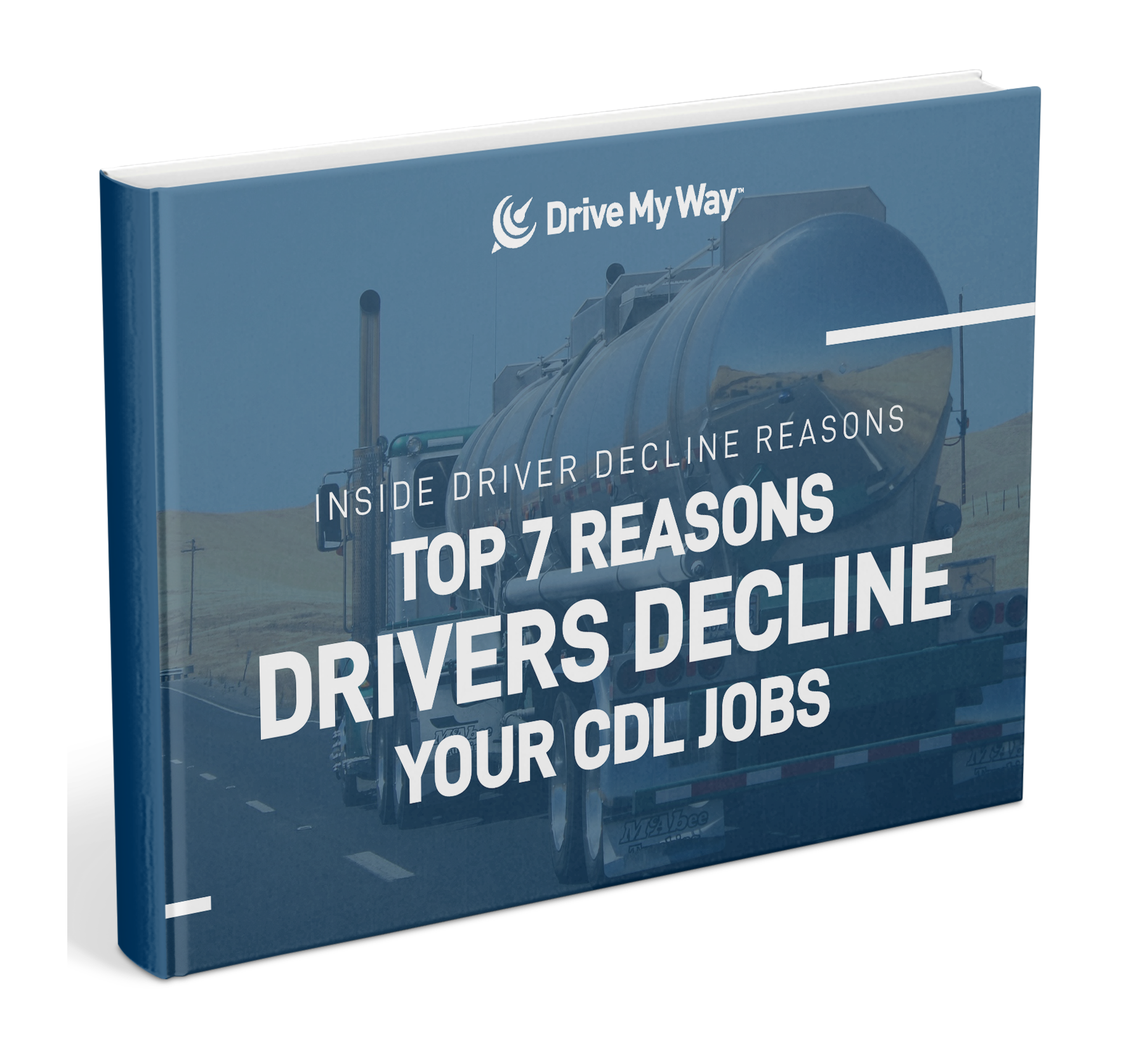
As a recruiter, you get barraged with job applications. The ratio of job applications for each open position can be overwhelming for recruiters to deal with. Sifting through dozens of applications and remembering each and every candidate can be exhausting, not to mention time-consuming.
Yet, it can be extremely helpful to contact truck drivers faster and speed up the hiring process. It goes without saying that if you don’t contact job candidates fast enough, you’ll lose them to someone else. There are also many other reasons to contact truck drivers faster during the hiring process and maintain open lines of communication and dialogue.
1. You Won’t Lose the Top Candidates
The most important reason to contact truck drivers faster is that this way you’re less likely to lose the top candidates to your competitors. In fact, according to data by drivers matched through Drive My Way, the top reason candidates declined job offers is because they just accepted an offer by someone else.
Being scooped by rivals is especially risky for your top candidates. One recommended solution is to assign a “decide-by date” for candidates. This way you can focus your immediate time and attention first to the top-tier prospects, then to the second-tier prospects, and so on.
Categorize your prospects into tiers, type of jobs, or other characteristics. Otherwise, you risk drowning in an overwhelming number of candidates whose details you won’t remember. It may seem intuitive that a slow hiring process improves the quality of those you hire because you have more time to gather information and feedback before deciding. However, there is a trade-off as well. Slow hiring can also have the opposite effect because the longer you take, the lower the quality of new hires will be.
If you take too long to hire, you may have to pay new hires more because they will be bid on.
So, if your company is the first to approach and hire them before other companies have a chance to offer them something, they will most likely accept your initial salary offer. Contacting truck drivers sooner lowers the chances that they will be scooped up by rivals, or that rivals will drive up the salary negotiation process.
2. A Window to Communication on the Job
A big reason to contact truck drivers faster and often during the hiring process is that it is a strong indicator of workplace communication habits within the company. This is a reason often missed by recruiters because it has more to do with marketing than with HR. This goes to the heart of the dual function recruiters play in organizations.
In addition to facilitating the hiring process from point of contact through placement, recruiters also play a role in persuading top talent to join their fleets. The speed and flexibility of the hiring process can indicate to job candidates that the organization communicates with its employees well and makes decisions quickly.
A candidate might impress you by arriving early and proactively sending a thank-you note. Similarly, your company can impress candidates by contacting them quickly and offering as much information as possible.
According to a survey by the platform 15Five, only 15% of employees are “very satisfied” with the quality of communication within their companies. This leaves plenty of room for improvement, and any way to signal that your company values communication will be noticed by truck drivers.
3. Give Feedback on Resumes or Interviews
The traditional method is that a candidate applies, you review their materials, and schedule an interview. Some companies may touch base once or twice, or at times, the candidate only hears back once you’ve made a decision. But most candidates want to hear how they did, whether good or bad. In a LinkedIn survey, 94% of respondents said they want to receive feedback on their interviews.
Employers are afraid of upsetting candidates or gaining a bad reputation such that they avoid giving feedback entirely. However, if done right, you can give candidates extremely beneficial feedback. Talk about both positives and negatives, and you can maintain or even improve your company’s reputation.
Let them know that you were impressed by their materials and experiences. Then, lead with strengths before weaknesses. Inform them about what you liked or which skill or experience made them particularly strong. When addressing weaknesses, take care to phrase it delicately. “I would have loved to have heard more about….”, or “I didn’t get the chance to learn about…..” usually works best, regardless of whether the message is over phone or email.
Candidates might surprise you. Many people will thank you for the feedback, even if they aren’t the best match for the positions. This can boost your company’s reputation among truck drivers, and the good karma may come back to help you with a prospect highly suited for your fleet. Contact your prospects faster to give them feedback on how they did.
4. Start Talking Numbers Early
One final reason to contact truck drivers faster is to start talking about salary and compensation. Usually recruiters may mention numbers only with an offer and expect candidates to accept or negotiate for a higher salary.
If you start mentioning numbers mid-way through the recruiting process it actually has several advantages.
Bringing up the numbers early on signals your interest to your prospects. This makes it less likely that they will accept another offer by someone else. Second, the nature of salary and compensation becomes more transparent. Your prospects have very little idea if your offer is in line with their skills, what salary is typical at the company, and other factors that go into deciding the compensation package.
Most companies think it is in their interest to keep their prospects in the dark. In reality, it may be more beneficial to be transparent. Most candidates aren’t just looking for more money, but they want to know that they are being paid fairly. If your package is the best the company can afford to pay them, your prospects will want to know that.
A PayScale survey found that 82% of employees who were payed lower than industry average but whose employer was open about their salary were satisfied with their jobs.
It even helps to show your math: how did the company reach that figure? Contact truck drivers faster and be open and transparent about pay and benefits early in the game. Doing so will help you gain trust and build a stronger reputation for your company.

Access More Driver Decline Reasons
Unlock additional reasons why truck drivers decline your CDL jobs by downloading our free ebook. The book shares insight to what drivers really want.















